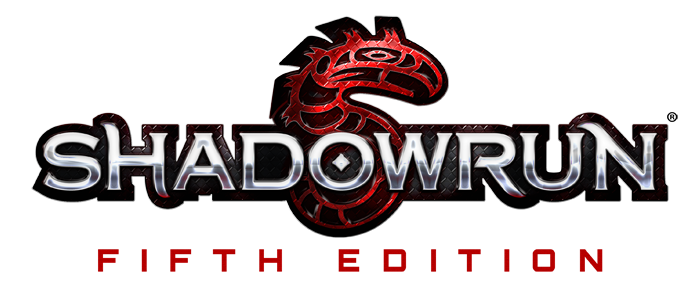
As I mentioned in Sprawl Gangers Designer Diary 2 (and Jason alluded to in his Introductory Box Set blog post), one of my goals right at the start was to try and achieve a thematic cohesion of terms—and rules as appropriate—across all the games we’re publishing during this Year of Shadowrun.
What do I mean by that? Well, here’s a sidebar straight out of the current draft of the rules out for playtest:
Fusing magic with technology in a dystopian near-future setting, Shadowrun’s popularity has crossed into video games, fiction, and more—including this miniatures game—but the living, breathing Sixth World role-playing game setting has always been its heart.
With that in mind, unlike many tabletop miniatures games that describe their models in impersonal rules terms, Sprawl Gangers, through its word choices and terms, attempts to bring every model to life as a flesh and blood part of Awakened Metahumanity. However, at the end of the day, while the terminology may be a little different from what a tabletop miniatures player is used to seeing, the rules will still have you squaring off with your models against your opponent and tossing dice towards victory!
But what does that actually mean for the game? It means, as much as appropriate, game terms and certain elements of mechanics are applied across the games. For example, in Shadowrun Fifth Edition you “make a Test” when trying to accomplish something in the roleplaying game, creating a pool of dice based on Attribute + Skill + modifiers against a Threshold value.
Those same terms and that same core mechanic for building dice pools are also emulated in Sprawl Gangers. When I want my Troll hardcore ganger to blast away and an Elven decker with his Remington 990, I make a Ranged Attack Test and build the dice pool as Agility + Firearms Skill + modifiers against a Defense Test made by the Elven decker.
We’ve also used as many of the same terms as possible during the design of Crossfire. And in fact, there are two terms that were specifically generated for Crossfire that I liked enough to fold them back into Sprawl Gangers: “Staggered” and “Critical.”
In Crossfire “Staggered” represents when a character is one step from collapsing, while “Critical” means the character has collapsed and he can’t do anything else. To emulate that in Sprawl Gangers, “Staggered” tokens are placed on a model for different reasons, such as taking damage, and limit the models actions, while the term “taken to Critical” is used when a model is eliminated and pulled from the playing area.
Why such a desire to cross-use terms/game mechanics like that? Won’t that mean the games play too similarly?
The easy answer to the later question is absolutely not. Each of these games is very distinct, with each bringing its unique flavor and its own fun to any table. However, working hard to implement as much cross-use of terms/mechanics as appropriate nets several desirable objectives.
First, it makes learning one of the new games when you’ve already got one under your belt easier. Love the RPG and want to try out Sprawl Gangers? You’ll be that much of a leg-up for the speed of understanding rules and tossing dice. Or if you’re moving from Sprawl Gangers to Crossfire. And so on.
Obviously this doesn’t mean we expect every person to play every game. However, my experience is that often if a person loves a universe, he or she loves immersing in that universe in a variety of ways. This works to lower the barrier of entry for that type of player.
Second, there are numerous examples of universes that have a variety of different style games within that space but some of them hardly feel like they’re even set within said universe. For example, when the original BattleForce box set published for BattleTech, the game terms and concepts used were so vastly different than anything previously done it was exceedingly difficult to get into the game, much less feel like the game you were playing was part of the over-all BattleTech experience. By striving to consistently use terms across all of the games of the Year of Shadowrun, we hope to accentuate Shadowrun as the pre-imminent experience and enjoyment of any of these games.
Whether you’re roleplaying, shuffling cards, moving miniatures or laying out a board, the name of the game should be having a blast immersing yourself in the Sixth World.
Next post I’ll start providing details on the actual mechanics and what you can do on the mean sprawl streets.
Randall N. Bills






